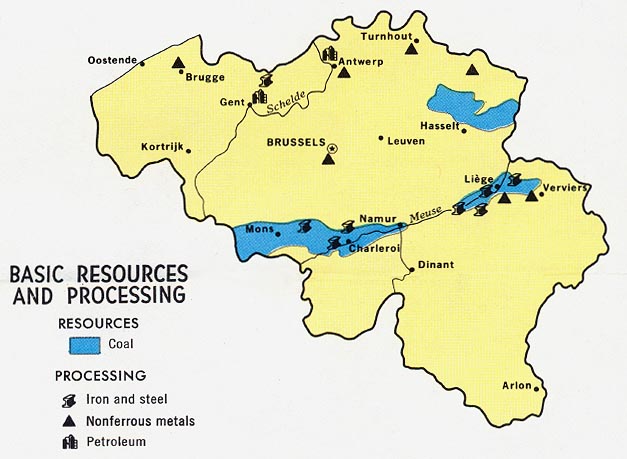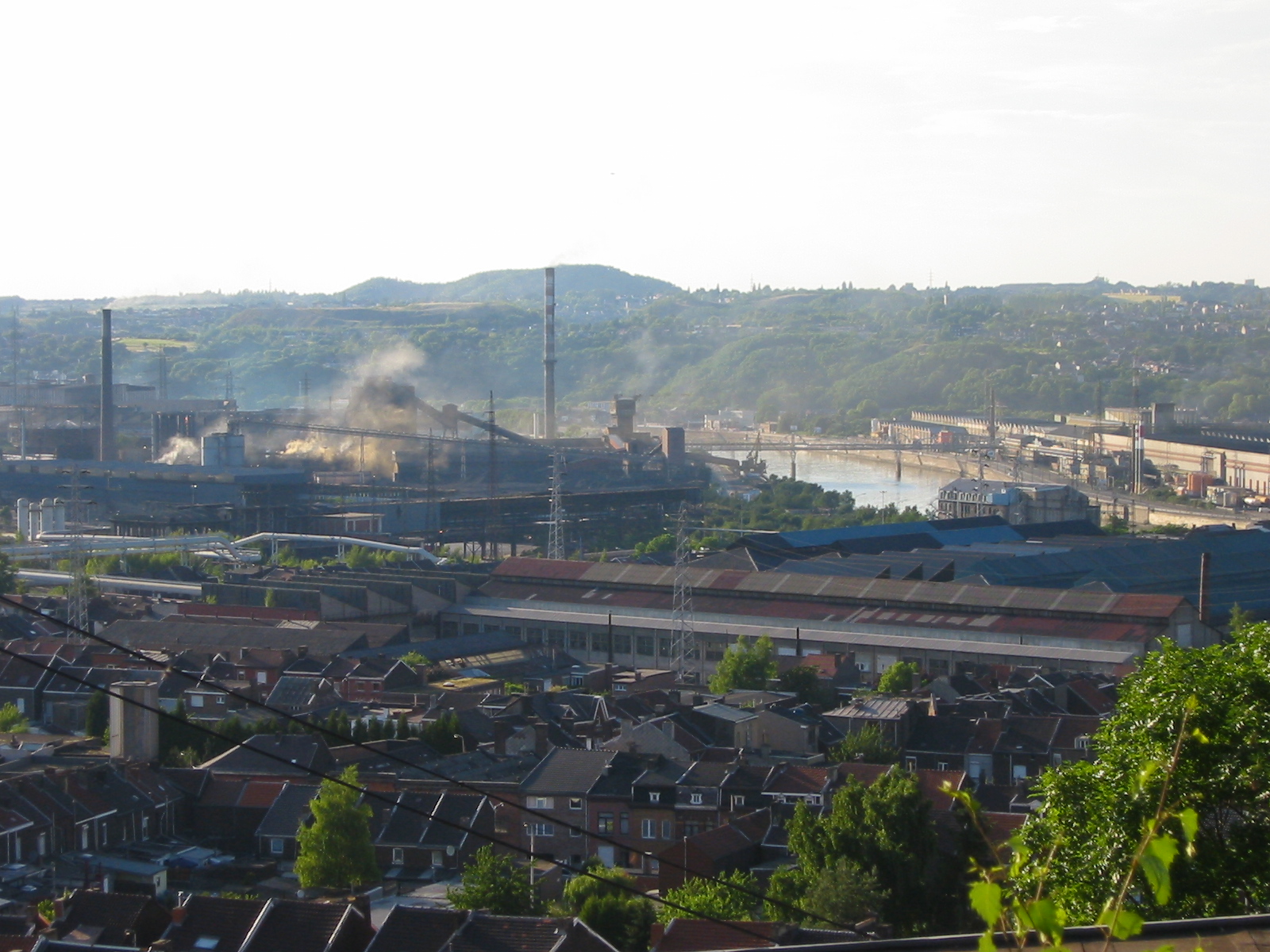Sambre and Meuse valley on:
[Wikipedia]
[Google]
[Amazon]
 The ''Sillon industriel'' (, "industrial furrow") is the former industrial backbone of
The ''Sillon industriel'' (, "industrial furrow") is the former industrial backbone of
 The sillon industriel was the first fully
The sillon industriel was the first fully
 The ''Sillon industriel'' (, "industrial furrow") is the former industrial backbone of
The ''Sillon industriel'' (, "industrial furrow") is the former industrial backbone of Belgium
Belgium, ; french: Belgique ; german: Belgien officially the Kingdom of Belgium, is a country in Northwestern Europe. The country is bordered by the Netherlands to the north, Germany to the east, Luxembourg to the southeast, France to th ...
. It runs across the region of Wallonia
Wallonia (; french: Wallonie ), or ; nl, Wallonië ; wa, Waloneye or officially the Walloon Region (french: link=no, Région wallonne),; nl, link=no, Waals gewest; wa, link=no, Redjon walone is one of the three regions of Belgium—alo ...
, passing from Dour
Dour (; pcd, Doû) is a municipality of Wallonia located in the province of Hainaut, Belgium.
On 1 January 2006 the municipality had 16,810 inhabitants. The total area is 33.32 km2, giving a population density of 505 inhabitants per km2. ...
, the region of Borinage, in the west, to Verviers
Verviers (; wa, Vervî) is a city and municipality of Wallonia located in the province of Liège, Belgium.
The municipality consists of the following districts: Ensival, Heusy, Lambermont, Petit-Rechain, Stembert, and Verviers. It is also ...
in the east, passing along the way through Mons, La Louvière ( ''Centre''-region), Charleroi (''Pays Noir
The ''Pays Noir'' (French, 'black country') refers to a region of Belgium, centered on Charleroi in the province of Hainaut in Wallonia so named for the geological presence of coal. In the 19th century the region rapidly industrialised first with ...
''), Namur, Huy
Huy ( or ; nl, Hoei, ; wa, Hu) is a city and municipality of Wallonia located in the province of Liège, Belgium. Huy lies along the river Meuse, at the mouth of the small river Hoyoux. It is in the ''sillon industriel'', the former industrial ...
, and Liège. It follows a continuous stretch of valleys of the rivers Haine
The Haine (, ; ; ; pcd, Héne; wa, Hinne) is a river in southern Belgium ( Hainaut) and northern France (Nord), right tributary of the river Scheldt. The Haine gave its name to the County of Hainaut, and the present province of Hainaut. Its s ...
, Sambre, Meuse
The Meuse ( , , , ; wa, Moûze ) or Maas ( , ; li, Maos or ) is a major European river, rising in France and flowing through Belgium and the Netherlands before draining into the North Sea from the Rhine–Meuse–Scheldt delta. It has a t ...
and Vesdre
The Vesdre ( French, ) or Weser ( German, ) and Vesder (Dutch, ) is a river in Liège Province, eastern Belgium. A few kilometres of the upper reaches also flow through the German municipality Roetgen and form part of the Belgian–German border. ...
, and has an area of roughly 1000 km².
The strip is also known as the Sambre and Meuse valley, as those are the main rivers, or the Haine-Sambre-Meuse-Vesdre valley, which includes two smaller rivers. ( French: ''sillon Sambre-et-Meuse'' or ''sillon Haine-Sambre-Meuse-Vesdre''). It is also called the ''Dorsale wallonne'', meaning "Walloon ndustrialbackbone".
It is less defined by physical geography
Physical geography (also known as physiography) is one of the three main branches of geography. Physical geography is the branch of natural science which deals with the processes and patterns in the natural environment such as the atmosphere, ...
, and is more a description of human geography
Human geography or anthropogeography is the branch of geography that studies spatial relationships between human communities, cultures, economies, and their interactions with the environment. It analyzes spatial interdependencies between social i ...
and resource
Resource refers to all the materials available in our environment which are technologically accessible, economically feasible and culturally sustainable and help us to satisfy our needs and wants. Resources can broadly be classified upon their ...
s. As heavy industry
Heavy industry is an industry that involves one or more characteristics such as large and heavy products; large and heavy equipment and facilities (such as heavy equipment, large machine tools, huge buildings and large-scale infrastructure); o ...
is no longer the prevailing feature of the Belgian economy, it is now more common to refer to the area as a ''former'' industrial belt.
Around two-thirds of the population of Wallonia
Wallonia (; french: Wallonie ), or ; nl, Wallonië ; wa, Waloneye or officially the Walloon Region (french: link=no, Région wallonne),; nl, link=no, Waals gewest; wa, link=no, Redjon walone is one of the three regions of Belgium—alo ...
lives in the area – over two million people. Its main stretch is sometimes called the Charleroi-Liège valley, which connects Charleroi and Liège. Some see it as a Walloon metropolis
A metropolis () is a large city or conurbation which is a significant economic, political, and cultural center for a country or region, and an important hub for regional or international connections, commerce, and communications.
A big ci ...
, although it is linear rather than multi-directional sprawl.
History
 The sillon industriel was the first fully
The sillon industriel was the first fully industrialized
Industrialisation ( alternatively spelled industrialization) is the period of social and economic change that transforms a human group from an agrarian society into an industrial society. This involves an extensive re-organisation of an econo ...
area in continental Europe, experiencing its first industrialisation wave from 1800 to 1820. Its industry brought much wealth to Belgium, and it was the economic core of the country. This continued until after World War II
World War II or the Second World War, often abbreviated as WWII or WW2, was a world war that lasted from 1939 to 1945. It involved the vast majority of the world's countries—including all of the great powers—forming two opposing ...
, when the importance of Belgian steel, coal and industry began to diminish. The region's economy shifted towards extraction of non-metallic raw materials such as glass
Glass is a non-crystalline, often transparent, amorphous solid that has widespread practical, technological, and decorative use in, for example, window panes, tableware, and optics. Glass is most often formed by rapid cooling ( quenching ...
and soda
Soda or SODA may refer to:
Chemistry
* Some chemical compounds containing sodium
** Sodium carbonate, washing soda or soda ash
** Sodium bicarbonate, baking soda
** Sodium hydroxide, caustic soda
** Sodium oxide, an alkali metal oxide
* Sod ...
, which lasted until the 1970s. The days of prosperity were gone, however, and a trend of unemployment and partial economic dependence on the formerly poorer Flemish Region
The Flemish Region ( nl, Vlaams Gewest, ),; german: Flämische Region usually simply referred to as Flanders ( nl, link=no, Vlaanderen ) ; german: link=no, Flandern is one of the three regions of Belgium—alongside the Walloon Region and t ...
began, and continues to this day.
The region has seen numerous general strikes, some with social aims, some with political aims. In 1886, due to economic crisis, lowering of salaries and unemployment; in 1893, 1902 and 1913, as a struggle for universal suffrage
Universal suffrage (also called universal franchise, general suffrage, and common suffrage of the common man) gives the right to vote to all adult citizens, regardless of wealth, income, gender, social status, race, ethnicity, or political stan ...
. More strikes occurred in 1932 and 1936, with a strike in 1950 on the question of the return of Leopold III to the Belgian throne. The region was at the heart of the general strike of winter 1960-1961, which helped Wallonia to gain autonomy. It was also the site of the first dechristianisation
The dechristianization of France during the French Revolution is a conventional description of the results of a number of separate policies conducted by various governments of France between the start of the French Revolution in 1789 and the Conc ...
in Belgium, and the most ferocious opposition to Leopold III's return to the throne.
Today
The region is the base of the Belgian francophone Socialist Party (''Parti Socialiste'') in Wallonia. Some of the region qualifies for Objective 1 or Objective 2 status under theRegional policy of the European Union
The regional policy of the European Union (EU), also referred as Cohesion Policy, is a policy with the stated aim of improving the economic well-being of regions in the European Union and also to avoid regional disparities. More than one third ...
because of its low GDP per capita. This is to encourage growth in the area. This is rare in Western Europe
Western Europe is the western region of Europe. The region's countries and territories vary depending on context.
The concept of "the West" appeared in Europe in juxtaposition to "the East" and originally applied to the ancient Mediterranean ...
.
Four former industrial sites in the region had been recognized by the UNESCO
The United Nations Educational, Scientific and Cultural Organization is a specialized agency of the United Nations (UN) aimed at promoting world peace and security through international cooperation in education, arts, sciences and culture. It ...
commission as a UNESCO World Heritage Site
A World Heritage Site is a landmark or area with legal protection by an international convention administered by the United Nations Educational, Scientific and Cultural Organization (UNESCO). World Heritage Sites are designated by UNESCO for ...
, the Major Mining Sites of Wallonia, in 2012.
See also
*Flemish diamond
The Flemish Diamond ( nl, Vlaamse Ruit) is the Flemish reference to a network of four metropolitan areas in Belgium, three of which are in the central provinces of Flanders, together with the Brussels Capital Region.Note: The Flemish government ...
, Flanders
Flanders (, ; Dutch: ''Vlaanderen'' ) is the Flemish-speaking northern portion of Belgium and one of the communities, regions and language areas of Belgium. However, there are several overlapping definitions, including ones related to cultu ...
's loose equivalent
* Black Country, British equivalent in the Midlands of England around Birmingham.
References